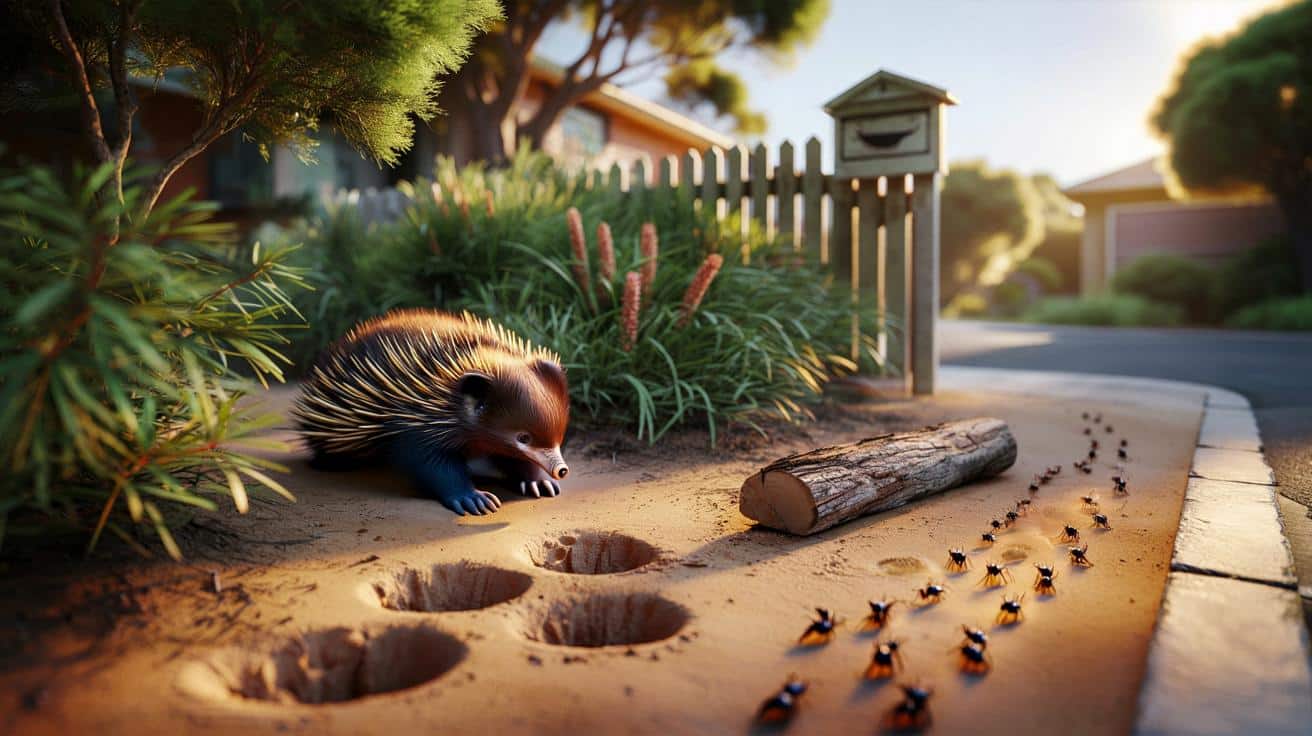The story began with a routine bit of weeding and tidying. What looked like a dull mound of mulch turned out to be something alive, ancient, and bristling with thousands of sharp spines. The surprise has lit up social media and prompted neighbours to ask how a modest patch of native shrubs can tempt such a rare guest to set up home at the front gate.
A prickly neighbour in the suburbs
An Australian homeowner has found an echidna sheltering among leaf litter in their front garden, a reward for months spent swapping lawn for native plants. The shy monotreme, often called the spiny anteater, had tucked itself into a cool pocket of soil and sticks near the path, leaving only a dense halo of quills visible to the eye.
Echidnas are unusual even by wildlife standards. They lay eggs, nurse their young with milk, and sport a flexible, beak-like snout that probes for ants, termites, and beetle larvae. They shun heat, prefer sandy or friable soils, and rely on shrubs and fallen branches for cover. Urban edges and quiet streets can suit them when residents offer food-rich habitat and keep disturbances low.
Only two kinds of living mammals lay eggs. If you’re in Australia and see spines, the visitor is almost certainly an echidna, not a hedgehog.
Gardeners who replant with local species create small oases that animals recognise. Leaf litter hosts insects. Dense shrubs break the wind and offer shade. Logs and stones hold moisture and hideaways. Put those pieces together and you build a tiny refuge where a sensitive creature can rest safely between nightly foraging runs.
Why native plants attract rare wildlife
Native plants and animals co-adapt. The timing of flowers, the density of leaves, the chemistry of sap, and the structure of roots all shape what can live in a place. A waterwise shrub that flowers in late summer feeds local insects when nectar is scarce. Those insects feed echidnas, skinks, and small birds. Replace a strip of lawn with such plants and you set off a chain reaction.
Swap just a few square metres of turf for layered natives and you cut watering, reduce mowing, and invite pollinators, birds, and—sometimes—an egg-laying mammal.
Clues you can spot in your own garden
- Snuffle holes: neat, conical probes in soft soil, typically 1–2 cm wide.
- Ant activity: busy trails near logs or pavers suggest dinner is served.
- Quiet daybeds: shallow depressions in shaded leaf litter under dense shrubs.
- Track lines: short, shuffling prints with claw marks, often along fence lines.
How to share a garden with echidnas
Most encounters end with the animal curling into a tight ball of spines and waiting until the coast is clear. If you’re lucky enough to host one, you can make small changes that keep both people and wildlife safe.
| What to do | Why it helps |
|---|---|
| Keep dogs inside or on lead at dawn and dusk | Protects a slow, ground-dwelling animal from bites and stress |
| Leave leaf litter, a few logs, and stones in shaded spots | Provides cover, moisture, and insect-rich foraging habitat |
| Use native shrubs in layers: groundcovers, mid-storey, small trees | Creates cool refuges and movement corridors |
| Fence lightly or leave gaps at ground level | Allows safe passage under or through boundaries |
| Avoid pesticides and ant baits | Prevents secondary poisoning and preserves natural food |
| Cover drains and pits; check pools have escape ramps | Reduces the risk of falls and drowning |
Handling and help
Never pick up or move an echidna unless a licensed rescuer instructs you. The spines are sharp, the digging is powerful, and in many Australian states native mammals are protected by law. If you see injuries, call a local wildlife rescue service. If roadworks or landscaping threaten a known daybed, pause work and seek advice—rescuers can relocate animals safely if needed.
Not a hedgehog: key differences at a glance
- Family tree: echidnas are monotremes and lay eggs; hedgehogs are placental mammals and give birth to live young.
- Snout: echidnas have a long, flexible snout and no teeth; hedgehogs have a short muzzle and tiny teeth.
- Tongue: echidnas use a sticky, fast tongue to harvest ants and termites; hedgehogs eat beetles, worms, and slugs.
- Where they live: echidnas range across Australia and New Guinea; hedgehogs occur in Europe, Africa, and Asia.
The gardening shift behind the visit
The homeowner who reported the echidna had been replacing conventional lawn with native groundcovers and shrubs. That shift saves water and time, especially during hot spells when grass crisps and hoses run. Natives suited to local soils establish deeper roots and need fewer fertilisers. The result: a cooler microclimate, a richer insect community, and a better chance of surprise encounters that delight families and neighbours alike.
Many councils now support this approach with street tree programmes, verge planting guidelines, and rebates for waterwise gardens. Schools add outdoor learning beds. Retirement villages plant small thickets of grevillea, banksia, and wattle. Each plot might be modest, but together these pockets link up as wildlife corridors that thread through suburbs.
Quick starter plan for a wildlife-friendly front garden
- Pick three layers: a hardy groundcover (e.g., native violet), a mid-height shrub (e.g., tea-tree), and a small tree (e.g., bottlebrush).
- Mulch deeply around plant bases to lock in moisture and feed soil life.
- Leave a “messy corner” with sticks and fallen leaves for insects and daybeds.
- Install a shallow water dish with stones for bees and birds; refresh often.
- Switch to slow-release, low-phosphorus fertiliser if your natives need a boost.
What this means for your street
One echidna in one front garden might seem like a small thing. Yet it points to a broader change. Residents who plant for place—rather than for uniform lawns—gain shade, birdsong, and seasonal colour. Streets cool faster after hot days. Driveways host lizards, not weeds. Children learn to spot tracks and listen for rustles beneath shrubs. The benefits add up beyond the fence line.
If you already garden with natives, consider sharing cuttings with neighbours. Map out safe crossings near known daybeds. Add a wildlife note to your community board. Tiny actions, multiplied across a block, can turn a sparse strip of suburbia into a living corridor where a rare, egg-laying mammal can pass unnoticed—until one day it curls up by your letterbox and makes you smile.









Fun read, but the headline screams clickbait. Still, the details are solid. We’ve started finding neat little cone holes near our pavers—definately 1–2 cm wide. Are those snuffle holes for sure, or could skinks make something similar? Any photo examples would help.